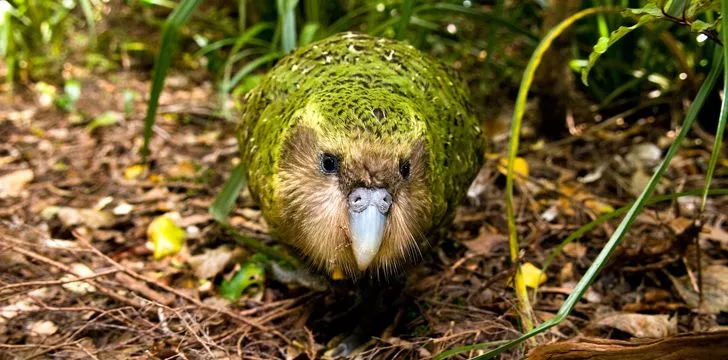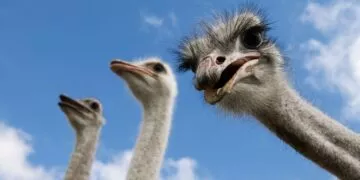Have you heard about Kakapos before? If not, there is a good reason for that – because they are one of the world’s rarest birds.
You’ve probably not seen one flying around, and there is a good reason for that too!
After reading these facts, you will love them so much, and you may even be ready to leave for New Zealand to see one alive.
Here are 20 rarest facts about Kakapos.
Kakapos are the world’s only flightless parrots.
Although they can’t use their wing as other birds do, they still can get from one point to the other thanks to their strong legs.
These flightless birds are unsurprisingly good hikers.
They utilize their short wings only when they need to balance their body or parachute themselves off the trees.
You may find them in New Zealand, but only if you are lucky.
According to the New Zealand Department of Conservation, as of August 2018, there were only 147 individuals in the world.
Thus, it makes them hard to find the bird in the wilderness.
They were also added to The IUCN Red List of Threatened Species.
They live for over 90 years.
Their lifespan is amazing. What is their secret? They definitely do not drink the elixir of life.
However, some scholars describe their way of life as if they are living in a time capsule.
Kakapos do not rush themselves; they mature slowly, they breed slowly, and they die slowly.
If you like the smell of honey, then you may like the smell of a kakapo.
Kakapos are known for their sweet odor, which reminds the smell of honey.
However, their smell can give a hint to hungry predators.
Kakapo was chosen as one of the world’s ugliest animals.
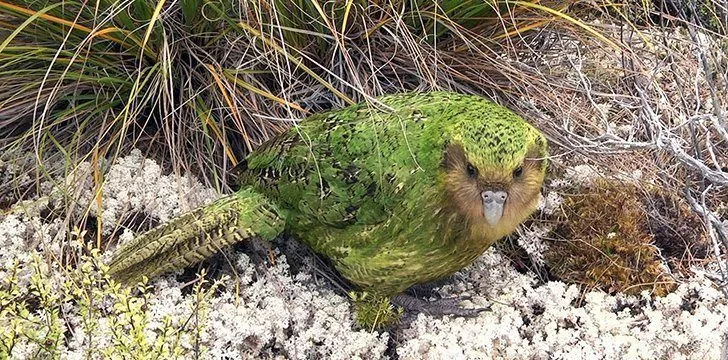
During a contest that was organized to raise awareness of endangered species, kakapo got the second spot after a deep-sea blobfish.
Everyone has a different taste.
Personally, I find kakapos attractive because of their vibrant colors and sharp eyes.
Although it is a parrot, it looks very similar to owls.
In fact, apart from their similar-looking facial appearance, they also share similar behaviors.
Both birds, kakapos and owls, are nocturnal.
Meaning they are more active during the night.
Kakapos’ sense of smell is one and a half times stronger than humans.
According to the Cornell University publication, kakapos are one the best “smellers” on this planet.
Humans have 400 functional olfactory receptors, while Kakapos possess 667.
Kakapos are the heaviest among all other species of Parrots.
Some may suspect their fat body structure to be the cause that prevents them from flying.
However, it is still debatable. One may ask a question similar to the famous “chicken or egg” question.
Are kakapos unable to fly because they are fat, or they got fat because they do not fly?
They breed when there is plentiful fruit of the Rumi Tree.
That happens once in two to four years.
Dr. Pamela Von Hurst from the University Massey found that fruits of the Rumi Tree, more specifically, the fruit’s vitamin D and Calcium content stimulate Kakapo breeding.
The scientists now believe that the discovery can be a real game-changer in kakapo breeding and increasing their population.
Kakapos lived alone on remote islands without having predators.
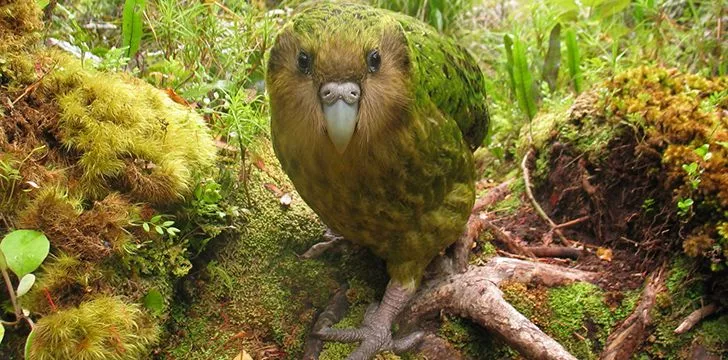
That means they lived without having a fear of becoming prey for a hungry creature.
Some scholars theorize that Kakapos did not learn to fly because they did not experience any fear and urge of self-defense, unlike many other birds.
Kakapos were historically important for the indigenous Maori people of New Zealand.
Kakapos were an easily accessible protein source for them. European settlers also hunted them down for meat.
So, when people started coming to those inhabited islands with their cats and dogs, populations of Kakapos were almost wiped out.
Thanks to recent conservation activities, they were prevented from going extinct.
They stop and freeze if they feel threatened.
That is the kakapos’ defense mechanism. When they are caught off guard, they just stay motionless.
That method works well for them since their camouflage feathers blend in with nature’s vegetation pretty well, making them hard to detect.
All of the existing kakapos have cool names.
You can learn all of their names by heart since there are not so many of them.
Apart from their names, their family and life history are also recorded.
For example, Maggie the Kakapo was the second female captured on Steward Islands.
She was first found in March of 1980. Unfortunately, she passed away in 2014 as a result of a landslide.
Currently, they are being kept in predator-free islands.
Codfish and Anchor islands are the home of the Kakapos.
They are being monitored on a regular basis in order to maintain their well-being.
The Name “Kakapo” means “Night Parrot” in the Maori language.
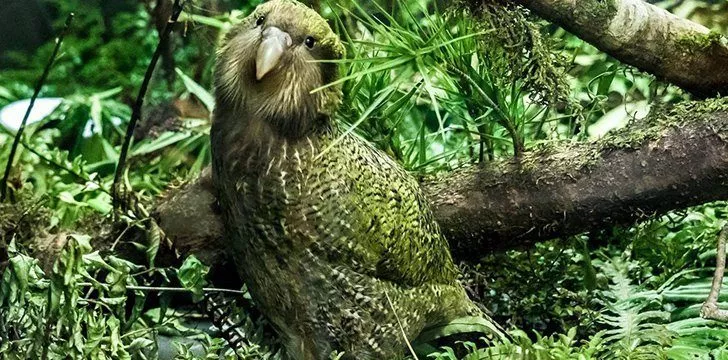
The word “Kaka” means Parrot, and “po” means night.
The reason is obvious, kakapos are more active at night, and they sleep during the day.
Kakapos are entirely herbivorous.
In other words, they stick to a plant-based diet.
They eat berries, fruits, seeds, and nuts.
However, their favorite food among all is the fruit of the Rumi Tree.
If this fruit is abundant, they prefer nothing else.
Although they are lacking the wing muscles to fly onto the tree, they ascend there by climbing.
Kakapos are birds, after all, so they want to be on the tree like any other birds do.
So, they climb there using their strong legs and come back down by parachuting with wings.
Unlike most birds, kakapos build their nests on the ground or in hollow tree trunks.
In some cases, their nest can also be found under the ground, inside natural cavities.
The birds lay 1-4 eggs per breeding season. Male kakapos do not take a part in the incubation process.
The eggs hatch within 29-30 days.
Maternal care lasts about 6 months until young kakapos fully adapt to independent life.
Kakapo Recovery Program equipped all of the kakapos with a GPS tracking device to monitor their movements remotely.
In addition, each of the existing Kakapos gets an individualized health check at the end of the year.
In other words, they are being treated as royals!
The numbers of kakapo population are steadily growing.
Of course, that is great news. In 1995, their numbers were close to extinction.
Fortunately, the establishment of Kakapo Recovery Programs has helped to increase their numbers steadily.
The year 2016 was a booming season for kakapo breeding, which bumped up their numbers by 28%.
